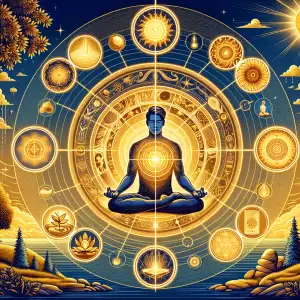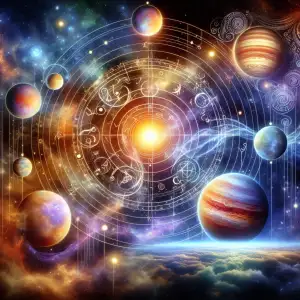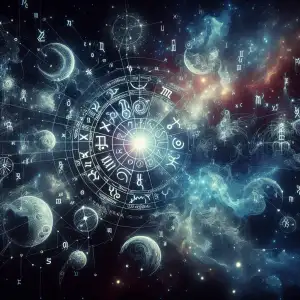Unveiling the Mysteries Beyond the Flower of Life

- Beyond Geometry: Deeper Meanings
- Flower of Life: Gateway Symbol
- Universal Consciousness Connection
- Sacred Geometry and Spirituality
- Vibrational Energy and Healing
- Meditation and the Flower of Life
- Activating the Merkabah
- Ascension and Spiritual Growth
- Beyond Duality: Unity Consciousness
- Manifesting with Sacred Geometry
- Flower of Life in Ancient Cultures
- Modern Interpretations and Uses
- Exploring Your Own Connection
Beyond Geometry: Deeper Meanings
Flower of Life: Gateway SymbolThe Flower of Life is not just a pretty pattern. Many see it as a sacred symbol, a visual representation of the building blocks of life itself. It's said to hold ancient wisdom about creation, the interconnectedness of all things, and the journey of the soul. Think of it as a gateway, a starting point for understanding deeper spiritual truths.
One concept often linked with the Flower of Life is sacred geometry. This field explores the geometric patterns and ratios found in nature, music, and even within our own bodies. The Flower of Life, with its repeating circles and intricate connections, embodies these principles, suggesting a hidden order and harmony in the universe.
Some spiritual seekers use the Flower of Life as a meditation tool. Focusing on its intricate design can quiet the mind, promoting a sense of peace and connection to something larger. Others see it as a reminder of our own potential. Just as the Flower of Life unfolds from a single point into a complex pattern, we too have the capacity for growth, expansion, and spiritual awakening.
While the origins of the Flower of Life are shrouded in mystery, its presence can be found across cultures and throughout history. From ancient Egyptian temples to Renaissance artwork, its enduring appeal speaks to a universal human fascination with the mysteries of life and our place within the grand scheme of things.
Universal Consciousness Connection
The Flower of Life, a sacred geometric pattern, is often seen as a gateway to understanding universal consciousness. Many spiritual traditions and esoteric teachings explore the interconnectedness of all things, suggesting we are not isolated beings but part of a vast, interconnected web of consciousness. This concept resonates with ancient wisdom and modern quantum physics, hinting at a deeper reality beyond our everyday perception.
Beyond the visual beauty of the Flower of Life lies a profound symbolism that speaks to the fundamental building blocks of creation. Each circle within the pattern represents a unit of consciousness, a soul, or a spark of the divine. The interlocking circles illustrate the interconnected nature of these units, showing how each one affects and is affected by the whole.
This concept of universal consciousness connection challenges the illusion of separation, inviting us to recognize our inherent oneness with all that is. It suggests that our thoughts, emotions, and actions have a ripple effect, impacting the world around us in ways we may not always perceive. This understanding can lead to a greater sense of responsibility for ourselves and the world, encouraging compassion, empathy, and a desire to contribute positively to the collective consciousness.

Various spiritual practices and teachings, such as meditation, mindfulness, and energy healing, offer pathways to tap into this universal consciousness connection. By quieting the mind, opening the heart, and cultivating a sense of inner peace, we can become more attuned to the subtle energies and interconnectedness that bind us all.
The exploration of universal consciousness connection goes beyond intellectual understanding; it is an experiential journey of self-discovery and spiritual awakening. It invites us to question our perceived limitations, embrace our interconnectedness, and recognize the profound unity that underlies the apparent diversity of life.
Sacred Geometry and Spirituality
Sacred geometry delves into the belief that geometric patterns hold profound spiritual significance. It explores the idea that these patterns are the fundamental building blocks of creation, reflecting a divine order and interconnectedness within the universe. While the Flower of Life is a well-known symbol in sacred geometry, there are numerous other fascinating concepts to explore.
One such concept is the Tree of Life, a central symbol in Kabbalah, a mystical tradition within Judaism. The Tree of Life consists of ten interconnected spheres, known as sefirot, each representing a different aspect of God's attributes or emanations. The arrangement of these spheres and the pathways connecting them are believed to reveal profound truths about creation, the nature of the divine, and the human journey.
Another intriguing concept is the Sri Yantra, a sacred geometric diagram used in Hinduism. It is composed of nine interlocking triangles that radiate outward from a central point, representing the union of the divine masculine and feminine principles. The Sri Yantra is considered a powerful tool for meditation and is believed to help individuals connect with higher states of consciousness.
Sacred geometry also explores the significance of specific geometric shapes. For instance, the circle often symbolizes unity, wholeness, and the eternal nature of the soul. The square represents stability, groundedness, and the material world. The triangle is associated with creation, manifestation, and the three aspects of the divine: creator, preserver, and destroyer.
By studying and contemplating these geometric patterns, practitioners of sacred geometry believe that individuals can gain a deeper understanding of the universe and their place within it. They see these patterns as a reflection of the divine blueprint that underlies all of creation, offering insights into the interconnectedness of all things and the fundamental principles governing existence.
Vibrational Energy and Healing
The concept of vibrational energy and its connection to healing has deep roots in various spiritual traditions. Proponents of this idea believe that everything in the universe, including our bodies, is in a constant state of vibration. When these vibrations are in harmony, we experience health and well-being. However, disharmony in our vibrational field, often caused by stress, negative emotions, or environmental factors, can lead to imbalances that manifest as physical or emotional ailments.
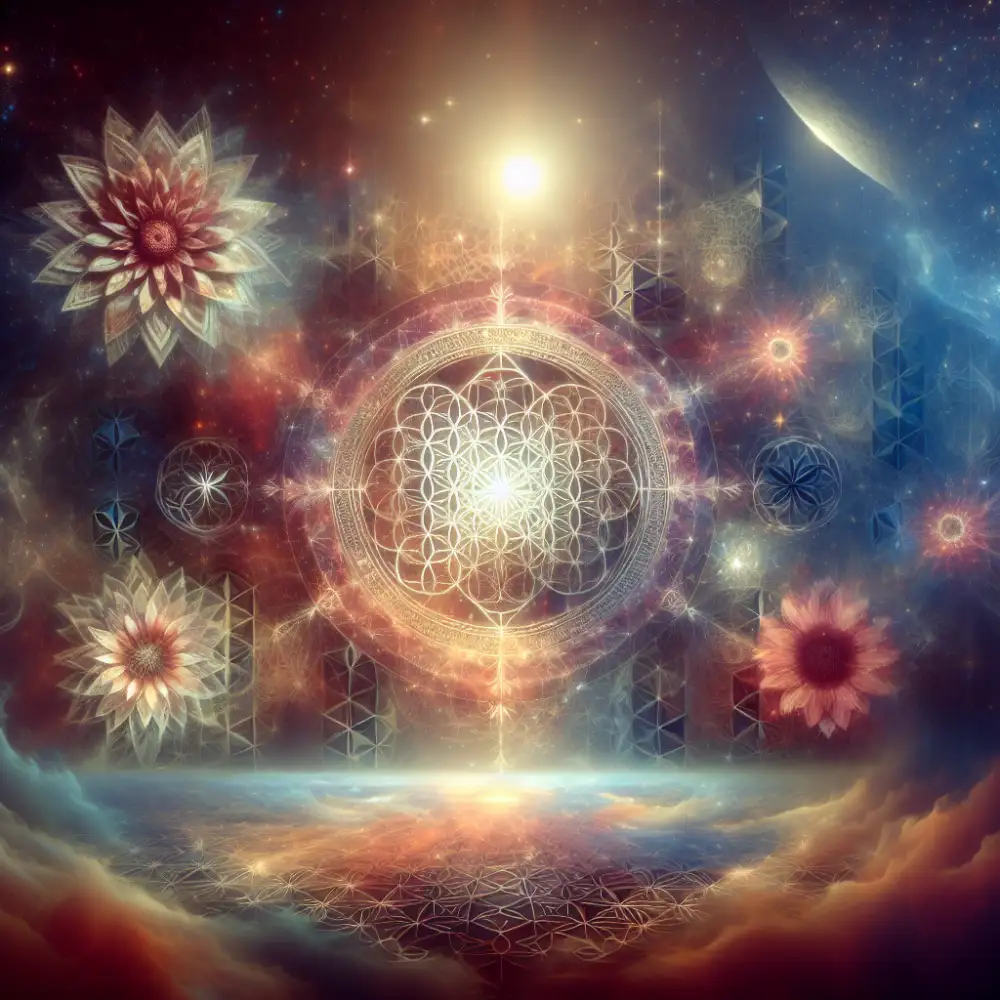
The Flower of Life, a sacred geometric pattern found in ancient cultures worldwide, is often associated with vibrational healing. It is seen as a visual representation of the interconnectedness of all things and the fundamental patterns of creation. While the Flower of Life itself doesn't directly heal, it serves as a powerful symbol and meditation tool to connect with higher frequencies and restore balance within our energy field.
Various healing modalities draw upon the principles of vibrational energy. Sound healing, for example, utilizes specific frequencies and vibrations from instruments like singing bowls or tuning forks to clear blockages and promote relaxation. Similarly, practices like Reiki and energy healing work with the subtle energy bodies surrounding the physical body, aiming to remove stagnant energy and restore the natural flow of vital force.
While scientific research on vibrational healing is still in its early stages, many individuals report positive experiences and benefits from these practices. It's important to approach these modalities with an open mind and consult with qualified practitioners. Ultimately, the journey of healing is deeply personal and multifaceted, and exploring the potential of vibrational energy can be one path towards greater well-being.
Meditation and the Flower of Life
The Flower of Life, a geometric pattern composed of overlapping circles, holds profound spiritual significance in various cultures. Many believe it represents the fundamental forms and patterns of creation. Meditation, a practice aimed at calming the mind and achieving higher awareness, can be enhanced by incorporating the Flower of Life.
Visualizing the Flower of Life during meditation can promote a sense of interconnectedness and harmony. Its intricate geometry is thought to activate dormant parts of the brain, leading to expanded consciousness. Some meditators use the Flower of Life as a focal point, allowing its symmetrical beauty to quiet mental chatter and facilitate a deeper meditative state.
Beyond its visual representation, the Flower of Life embodies sacred geometry principles, which explore the mathematical proportions and patterns found in nature. These principles suggest that everything in the universe is interconnected and can be understood through specific geometric ratios. By contemplating these concepts during meditation, individuals may gain insights into the fundamental laws governing the cosmos and their place within it.
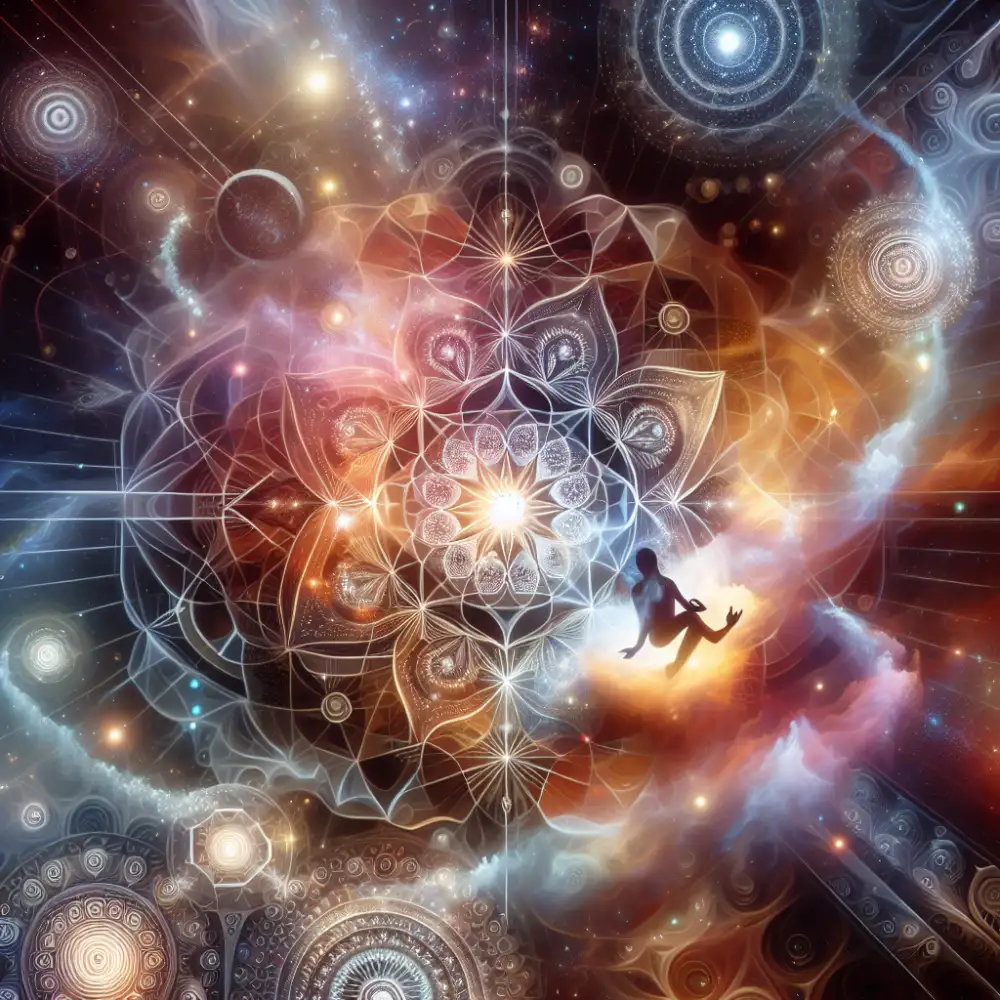

The practice of meditating with the Flower of Life can be further enriched by exploring related spiritual concepts. One such concept is the "Merkaba," a light body or energetic field that is said to surround the human body. The Merkaba is often depicted as a three-dimensional star tetrahedron, a shape derived from the Flower of Life geometry. Meditating on the Merkaba is believed to activate this energetic field, promoting spiritual awakening and facilitating astral travel or interdimensional experiences.
Whether used as a visual aid, a representation of sacred geometry, or a gateway to exploring concepts like the Merkaba, the Flower of Life offers a powerful tool for enhancing meditation and deepening spiritual understanding.
Activating the Merkabah
Activating one's Merkabah, a term often associated with esoteric teachings and depicted as a complex geometric structure of light, is said to be a profound spiritual experience. It's often described as activating a dormant energy field within and around the body, leading to expanded consciousness, heightened intuition, and even interdimensional travel.
While the concept of the Merkabah finds resonance in various spiritual traditions, Drunvalo Melchizedek's book, "The Ancient Secret of the Flower of Life," has popularized it in contemporary New Age circles. Melchizedek posits that the Merkabah is an energetic vehicle for ascension, allowing the spirit to transcend limitations and connect with higher realms.
The activation process often involves meditation, visualization, and breathing techniques aimed at harmonizing the body's energy centers, often referred to as chakras. It's believed that through focused intention and specific practices, one can activate this dormant energy field, symbolized by the rotating tetrahedrons of the Merkabah.
However, it's crucial to approach such practices with discernment and guidance from experienced practitioners. The journey of spiritual awakening is deeply personal and should be navigated with respect, caution, and a focus on inner transformation rather than seeking external powers.
Ascension and Spiritual Growth
Beyond the intricate geometry of the Flower of Life lies a deeper yearning, a pull towards ascension and spiritual growth. This sacred geometry, often depicted as a series of interconnected circles, is believed to hold the blueprint of creation, reflecting the fundamental patterns that make up our universe and ourselves. Yet, its significance extends beyond mere aesthetics or mathematical curiosity. It serves as a visual reminder of our interconnectedness, our potential for spiritual evolution, and the journey of the soul towards enlightenment.
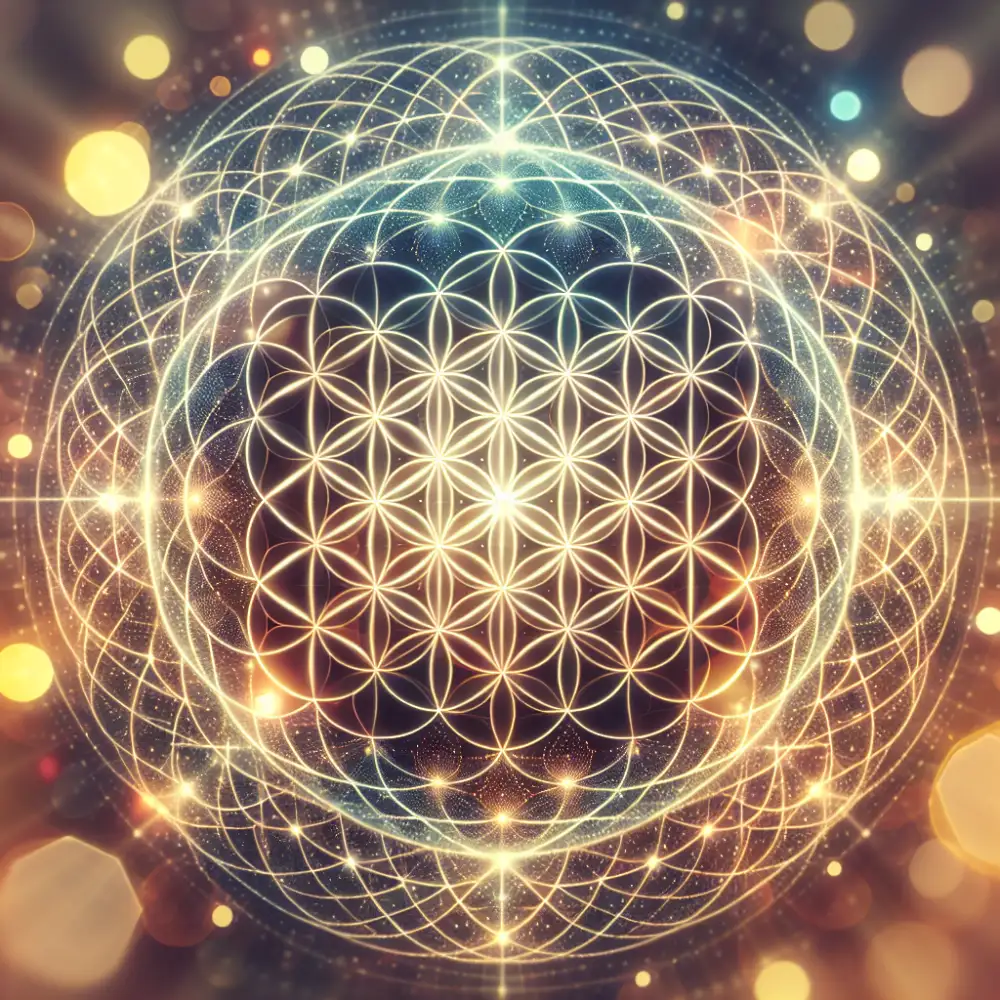
Many spiritual seekers find in the Flower of Life a roadmap for inner transformation. Meditating upon its form can facilitate a deeper understanding of universal principles, leading to increased self-awareness, expanded consciousness, and a heightened sense of connection to the divine. This process of awakening often involves shedding limiting beliefs, confronting shadow aspects of the self, and embracing forgiveness and unconditional love.
The journey towards ascension is not always linear or easy. It can be fraught with challenges and setbacks, moments of doubt and uncertainty. However, the Flower of Life reminds us that even in the darkest of times, we are inherently connected to a source of infinite love and wisdom. By aligning ourselves with this universal energy, we can tap into our innate potential for growth, healing, and spiritual liberation.
The concept of ascension, while often associated with esoteric traditions, finds resonance in various spiritual and philosophical teachings. Whether we seek enlightenment through meditation, prayer, acts of service, or simply striving to live a more conscious and compassionate life, the journey ultimately leads us back to our true nature—a spark of the divine, eternally connected to the source of all creation.
Beyond Duality: Unity Consciousness
The Flower of Life is a geometric pattern composed of evenly spaced, overlapping circles. It's considered a sacred symbol in many spiritual traditions, representing the fundamental forms of space and time. Some believe it holds the blueprint for creation itself. But what lies beyond this intricate symbol? Many spiritual seekers point towards Unity Consciousness.
Unity Consciousness, a concept found in various mystical traditions, suggests that beneath the apparent separation of individual consciousness, we are all interconnected, part of a single, unified field of awareness. This isn't merely a philosophical idea. It's an experiential reality, a shift in perception where the boundaries of the separate self dissolve, revealing the interconnectedness of all things.
Think of the Flower of Life. Each circle, while distinct, is inseparably linked to the others, contributing to the overall pattern. Similarly, in Unity Consciousness, we recognize our individual existence while simultaneously experiencing our interconnectedness with all beings. This realization goes beyond intellectual understanding. It's a deeply felt experience, often described as a state of profound peace, love, and oneness with everything.
Achieving this state of Unity Consciousness is often seen as a spiritual journey, a process of transcending the limitations of the ego and recognizing our true nature. Practices like meditation, mindfulness, and compassion cultivation are seen as pathways to cultivate this awareness. While the Flower of Life offers a visual representation of interconnectedness, Unity Consciousness invites us to experience this interconnectedness directly, to move beyond the symbol and embody the reality it represents.
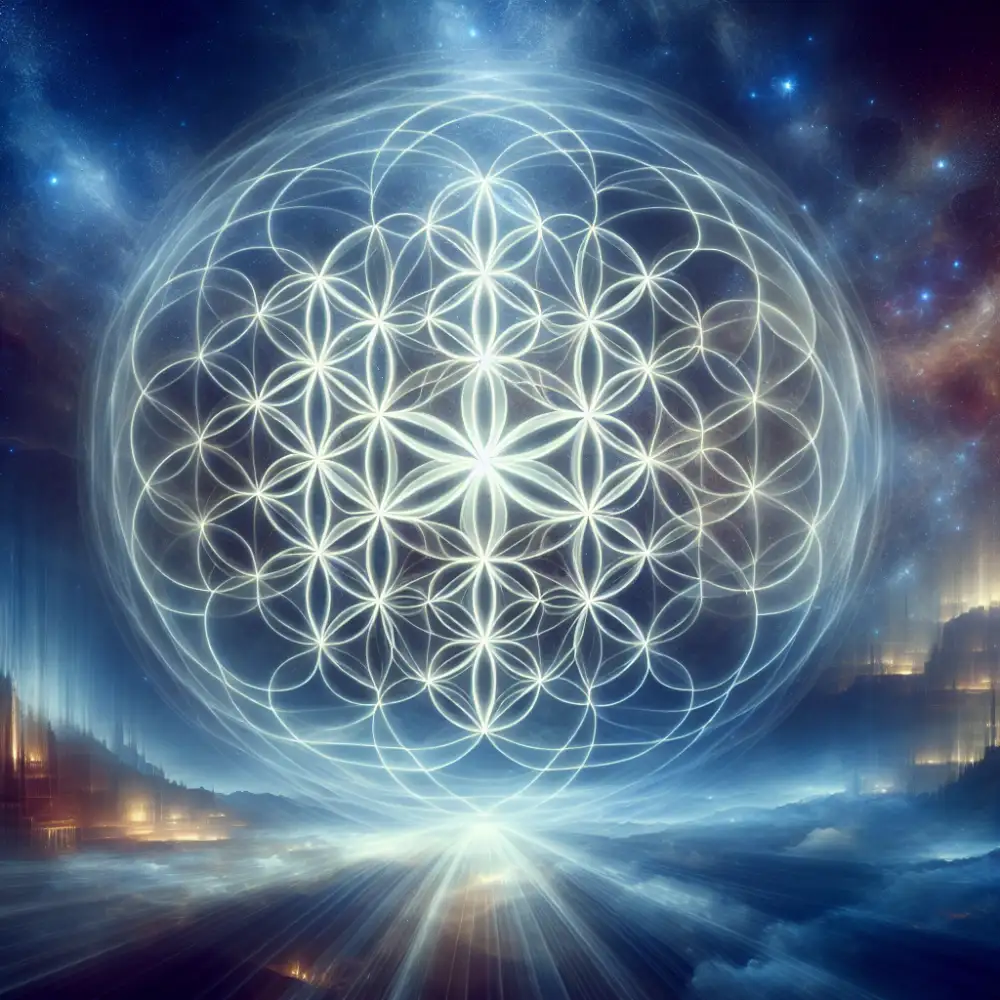

Manifesting with Sacred Geometry
Flower of Life in Ancient CulturesThe Flower of Life, a geometric pattern composed of overlapping circles, transcends mere aesthetics. Cultures across the globe, separated by vast distances and time, have incorporated this symbol into their spiritual beliefs and sacred spaces. In ancient Egypt, etchings of the Flower of Life adorn the walls of the Temple of Osiris at Abydos, believed to be a cradle of knowledge. These depictions suggest its significance in Egyptian cosmology and the mysteries of creation. Similarly, the symbol emerges in ancient Assyrian art, found on artifacts like decorative bowls, pointing to its presence in Mesopotamian civilizations.
The Flower of Life's allure extends beyond the ancient world. In Renaissance Europe, renowned artists and thinkers like Leonardo da Vinci studied its intricate geometry, recognizing its mathematical properties and potential connections to the divine proportions governing the universe. The symbol's enduring presence across cultures suggests a shared human fascination with its inherent beauty and its potential to unlock deeper truths about the nature of reality, creation, and our place within the cosmos. It serves as a visual echo of the interconnectedness of all things, a concept explored in various spiritual traditions. Just as the Flower of Life unfolds from a single point to create a complex, interconnected pattern, so too do many belief systems perceive the universe as emanating from a singular source.
Beyond the intricate geometry of the Flower of Life lies not an ending, but a beginning - the boundless potential of the unmanifested, the silent symphony of pure consciousness waiting to be composed into being.
Elara Nightshade
Modern Interpretations and Uses
While the Flower of Life holds ancient significance, modern spiritual seekers and New Age practitioners have embraced and reinterpreted its symbolism. Many see it as a potent representation of interconnectedness, creation, and the underlying unity of the universe.
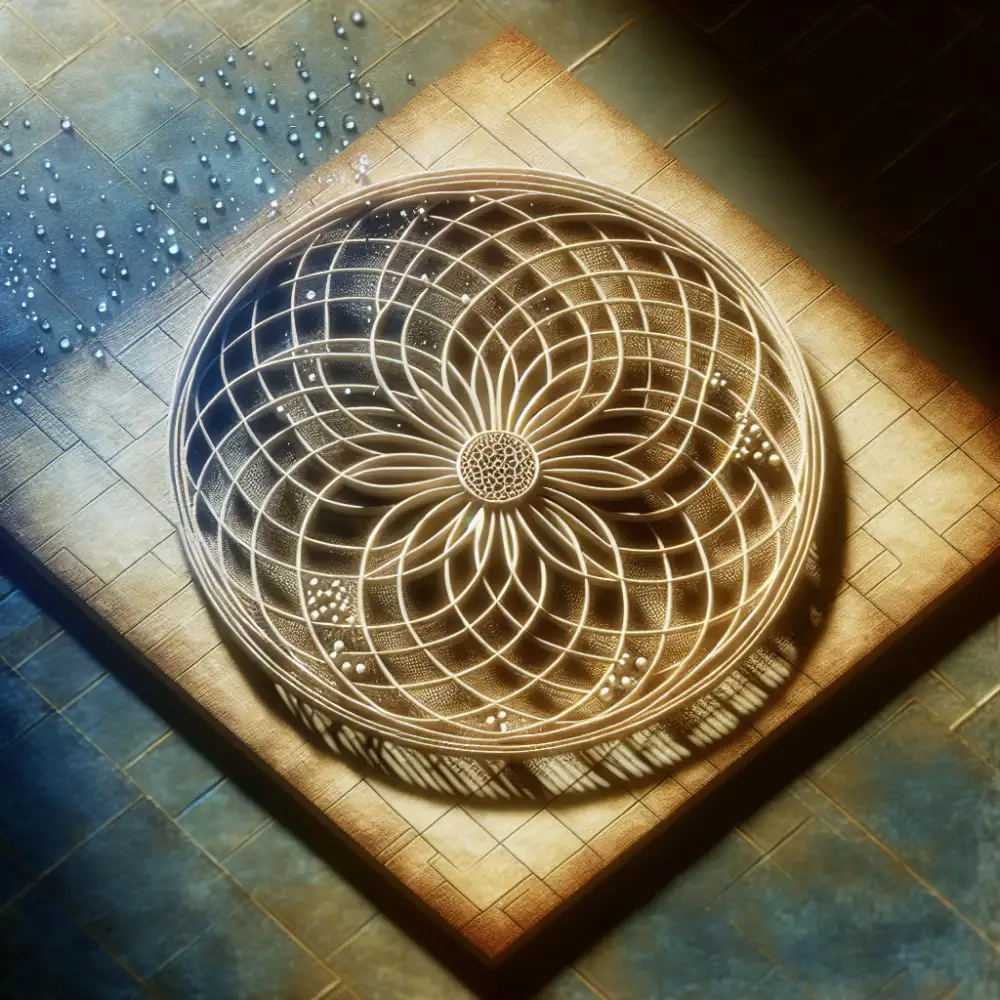
The geometric patterns within the Flower of Life are believed to hold sacred geometry principles, which some believe govern the fundamental structure of reality. This has led to its use in meditation, energy healing, and personal growth practices. Practitioners often use the Flower of Life as a visual focus for meditation, believing it can facilitate deeper states of consciousness and promote a sense of harmony and balance.
Authors and spiritual teachers like Drunvalo Melchizedek, in his book "The Ancient Secret of the Flower of Life," have explored the Flower of Life's deeper meanings, connecting it to ancient wisdom traditions and offering interpretations of its symbolism. These interpretations often delve into concepts like sacred geometry, the nature of consciousness, and the interconnectedness of all things.
However, it's important to note that many of these modern interpretations and uses are not directly supported by historical evidence or universally accepted within scholarly communities. While the Flower of Life's ancient origins are undeniable, its contemporary significance often stems from personal interpretations and experiences within various spiritual and New Age movements.
Exploring Your Own Connection
The journey inward is the most profound one we can take. As we delve into the mysteries of the Flower of Life and its deeper implications, we inevitably come face-to-face with our own reflection. This ancient symbol, with its intricate geometry and cosmic proportions, is not merely a beautiful pattern. It's a mirror reflecting our own divine blueprint, a reminder of our interconnectedness with all of creation.
This exploration requires introspection, a willingness to peel back the layers of conditioning and societal programming to uncover the truth within. Meditation becomes a key tool, allowing us to quiet the mind and listen to the whispers of our soul. Through practices like mindfulness, we become more present, more aware of the subtle energies that flow through and around us.
Remember, the Flower of Life is not a destination but a starting point. It's a symbol of infinite potential, a reminder that we are all creators, capable of manifesting our own reality. As you explore this ancient wisdom, trust your intuition. Allow yourself to be guided by the whispers of your heart. The answers you seek are not found outside yourself, but within the sacred space of your own being.
Published: 26. 06. 2024
Category: spirituality

